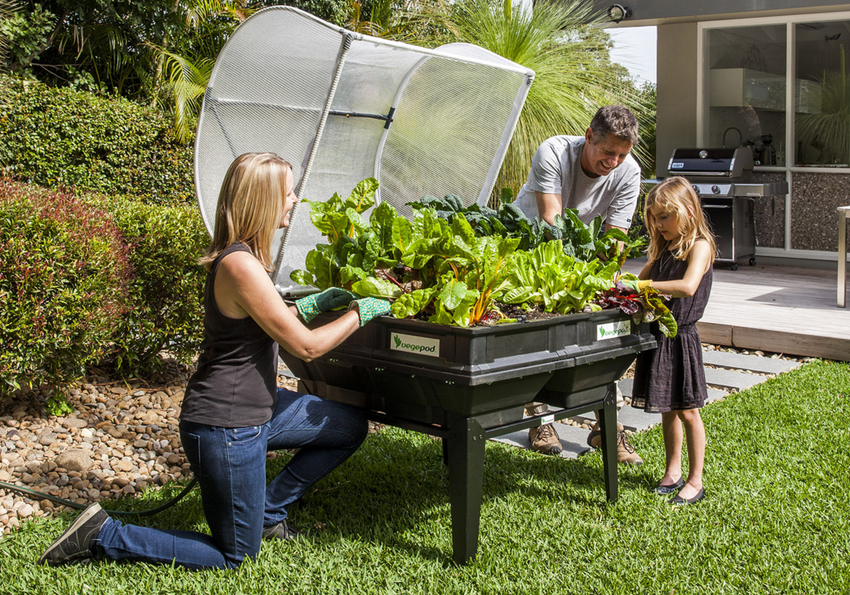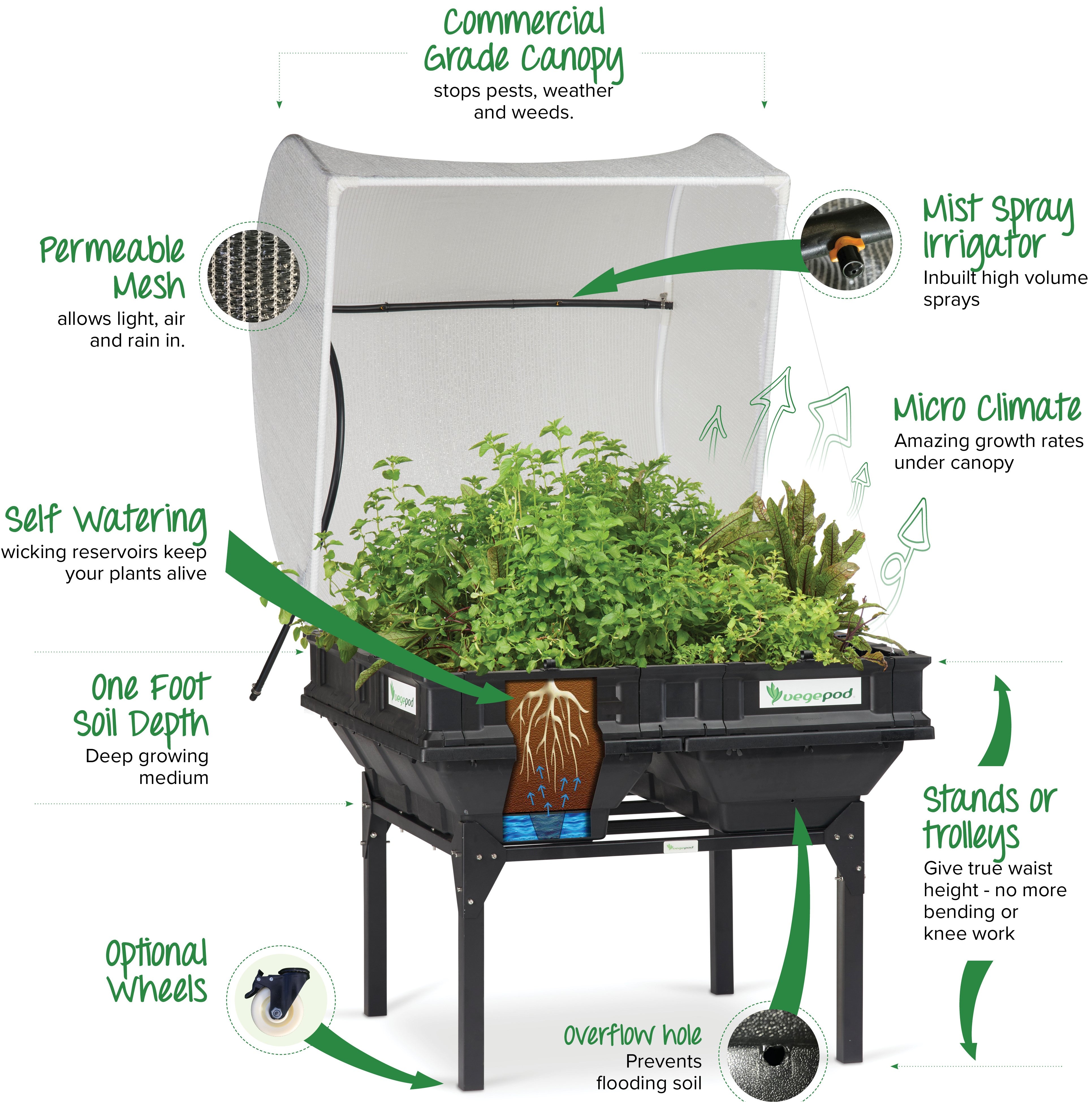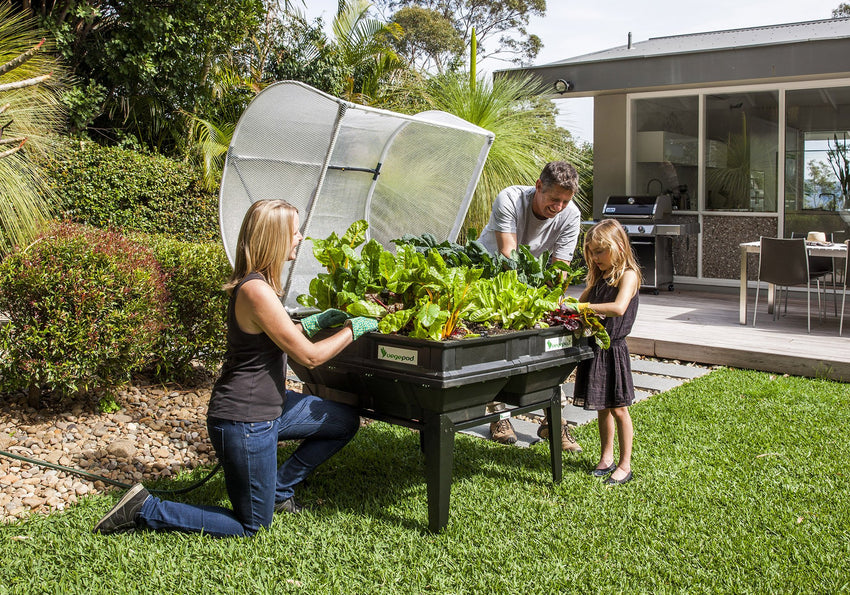Vegepod Raised Garden Beds: The Easiest Way To Grow Vegetables
Vegepod Raised Garden Beds: The Easiest Way to Grow Vegetables
Growing your own vegetables is a great way to save money, eat healthier, and connect with nature. But it can also be a lot of work, especially if you don't have a lot of experience gardening. That's where Vegepod raised garden beds come in.
Vegepods are self-watering raised garden beds that make it easy to grow vegetables, even if you don't have a green thumb. They come with everything you need to get started, including a durable frame, high-quality soil, and a built-in watering system.
Here are just a few of the benefits of using a Vegepod:
- Easy to set up and maintain: Vegepods are designed to be easy to assemble and use. Simply place the frame in your desired location, fill it with soil, and add your plants. The built-in watering system will take care of the rest.
- Self-watering: The Vegepod's watering system uses a wicking method to keep your plants hydrated. This means that you don't have to worry about watering your plants as often, which can save you time and hassle.
- Protects your plants from pests and diseases: The Vegepod's cover helps to protect your plants from pests and diseases. This can help you to reduce the amount of time you spend weeding and spraying, and it can also help to improve your crop yield.
- Extends your growing season: The Vegepod's cover can also help to extend your growing season. This means that you can start growing vegetables earlier in the spring and continue growing them later into the fall.
- Increases yields: Vegepods have been shown to increase yields by up to 30%. This is because the raised beds provide better drainage and aeration, which allows the plants to grow more roots and produce more fruit.
If you're looking for an easy and convenient way to grow vegetables, then a Vegepod raised garden bed is a great option. They're perfect for beginners and experienced gardeners alike, and they can help you to save time, money, and hassle.
Are you looking for an easy and effective way to grow vegetables at home? If so, you may want to consider a Vegepod raised garden bed. Vegepods are self-watering and contain their own microclimate, making them perfect for growing vegetables in a variety of climates. They are also easy to set up and maintain, so even beginners can enjoy the benefits of gardening.
To learn more about Vegepod raised garden beds, visit Home Gardening.
FAQ of vegepod raised garden beds
- What are the benefits of using a Vegetable Pod raised garden bed?
Vegetable Pod raised garden beds offer a number of benefits over traditional gardening methods. They are:
* Elevated: This makes them easier to access, especially for people with limited mobility.
* Drainage holes: These holes help to prevent waterlogging and root rot.
* UV-resistant: The plastic material is designed to withstand the sun's rays, so your plants will be protected from damage.
* Durable: Vegetable Pods are made from high-quality materials that can withstand the elements for years to come.
* Easy to assemble: The kits come with all the necessary tools and instructions, so you can have your garden bed up and running in no time.
* Long-lasting: Vegetable Pods can last for up to 10 years with proper care.
- What vegetables can I grow in a Vegetable Pod?
Vegetable Pods are a great option for growing a variety of vegetables, including:
* Tomatoes
* Cucumbers
* Peppers
* Lettuce
* Carrots
* Herbs
* Flowers
- How much space do I need for a Vegetable Pod?
The size of the Vegetable Pod you need will depend on the number of vegetables you want to grow. A single pod can accommodate a variety of plants, but if you want to grow a large crop, you may need to purchase multiple pods.
- How do I care for my Vegetable Pod?
Vegetable Pods are relatively low-maintenance, but there are a few things you can do to keep them in good condition:
* Water your plants regularly, especially during hot weather.
* Add compost to the soil every few months to help keep it nutrient-rich.
* Inspect your plants regularly for pests and diseases.
* Cover your Vegetable Pod with a tarp or frost cloth during the winter months to protect your plants from the cold.
- How much does a Vegetable Pod cost?
The cost of a Vegetable Pod will vary depending on the size and model you choose. However, they are generally more affordable than traditional gardening methods.
- Where can I buy a Vegetable Pod?
Vegetable Pods are available for purchase online and at some garden centers.
Image of vegepod raised garden beds
10 different images of Vegepod raised garden beds that are free to use:
- A Vegepod raised garden bed with a greenhouse cover. The cover is made of a durable material that protects the plants from pests and harsh weather.

- A Vegepod raised garden bed with a built-in misting system. The misting system helps to keep the plants hydrated, even during hot and dry weather.

- A Vegepod raised garden bed with a wicking bed design. The wicking bed design helps to retain water and nutrients, so you don't have to water your plants as often.

- A Vegepod raised garden bed with a variety of vegetables growing in it. The Vegepod is a great way to grow a variety of vegetables, even if you don't have a lot of space.

- A Vegepod raised garden bed being used by a family. The Vegepod is a great way for families to get involved in gardening together.

- A Vegepod raised garden bed being used by a child. The Vegepod is a great way for children to learn about gardening and where their food comes from.
- A Vegepod raised garden bed in a backyard. The Vegepod can be used in any type of space, including backyards, patios, and even rooftops.

- A Vegepod raised garden bed in a community garden. The Vegepod is a great way for community gardens to increase their growing capacity.

- A Vegepod raised garden bed in a school garden. The Vegepod is a great way for schools to teach students about gardening and where their food comes from.

- A Vegepod raised garden bed in a commercial setting. The Vegepod is a great way for commercial growers to increase their yields and efficiency.

Post a Comment for "Vegepod Raised Garden Beds: The Easiest Way To Grow Vegetables"